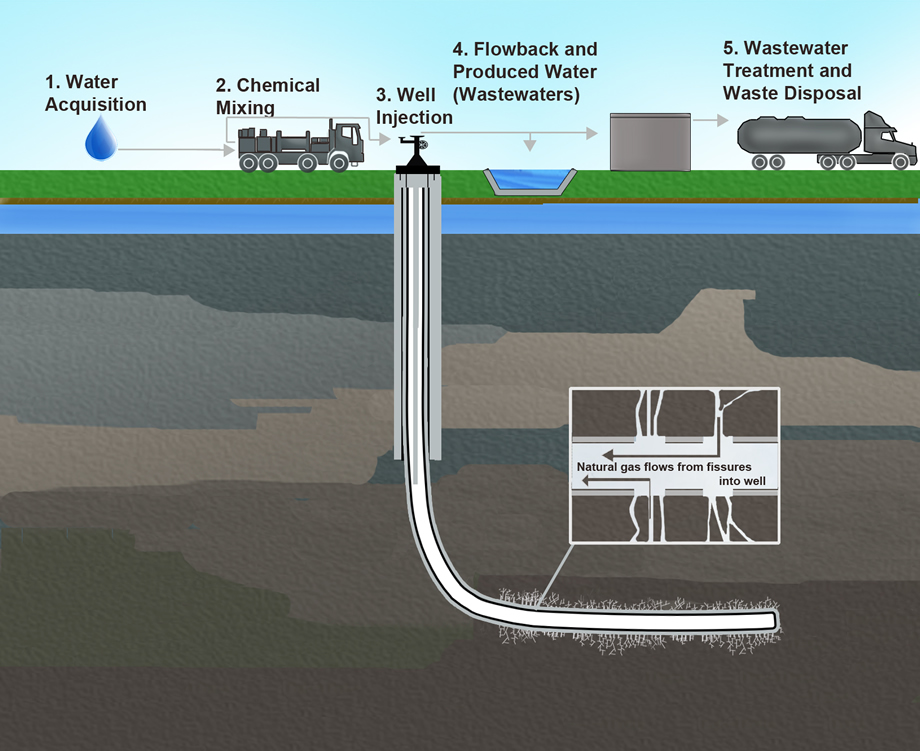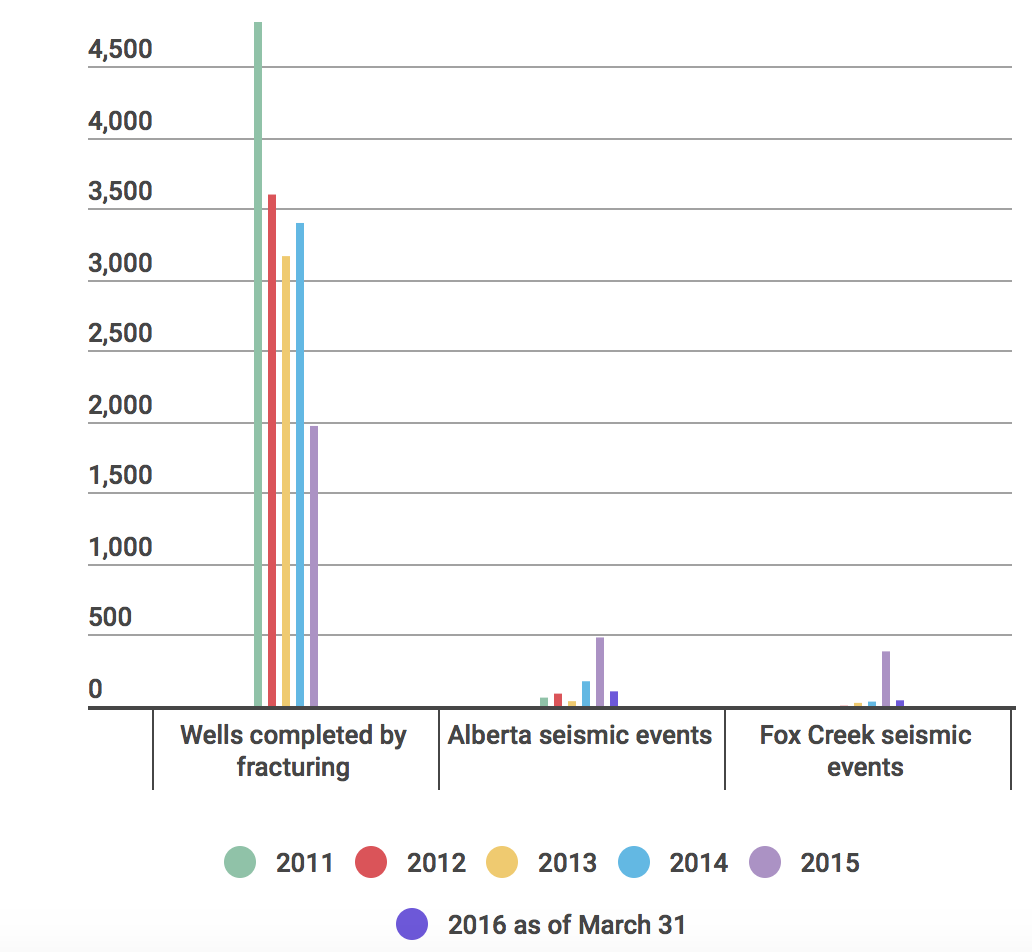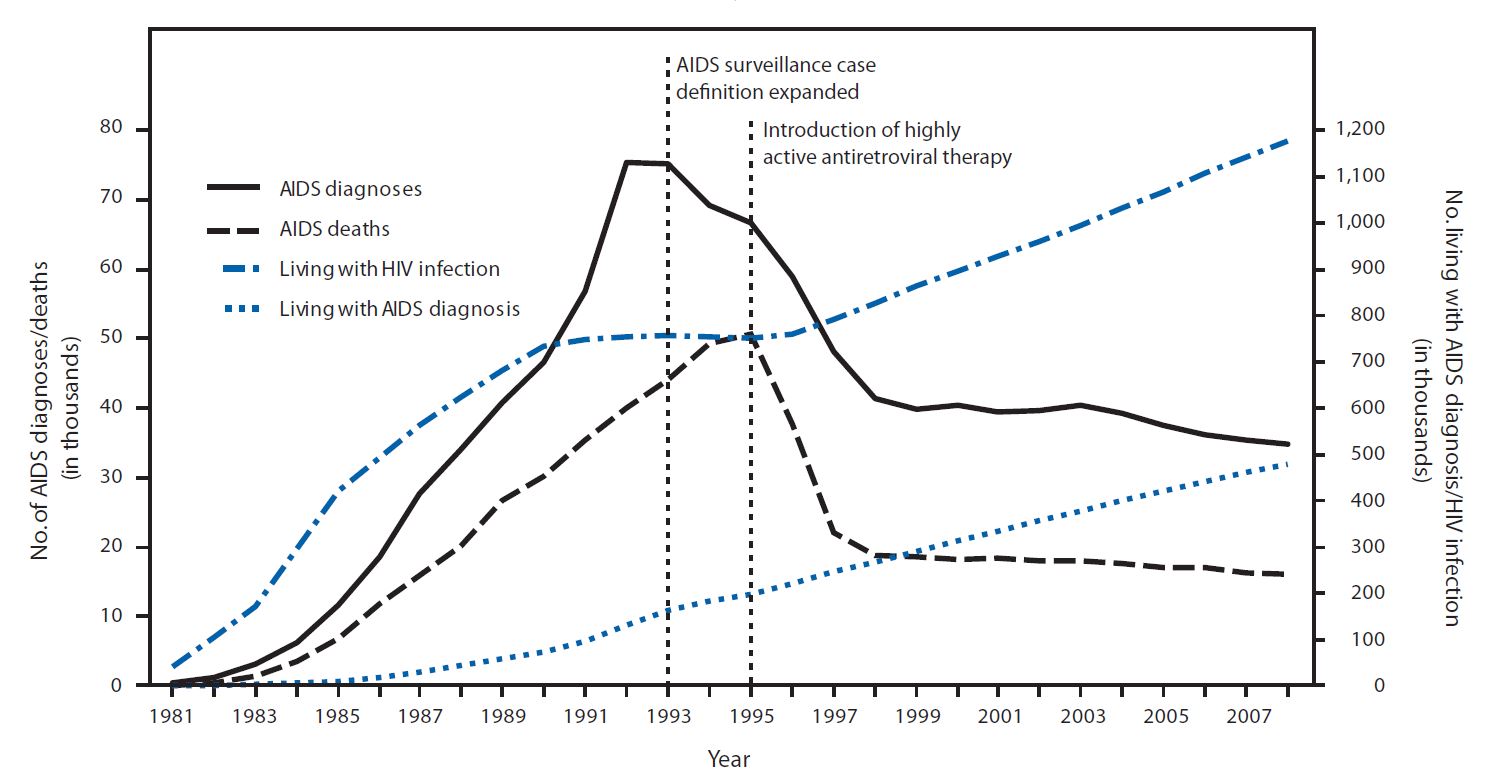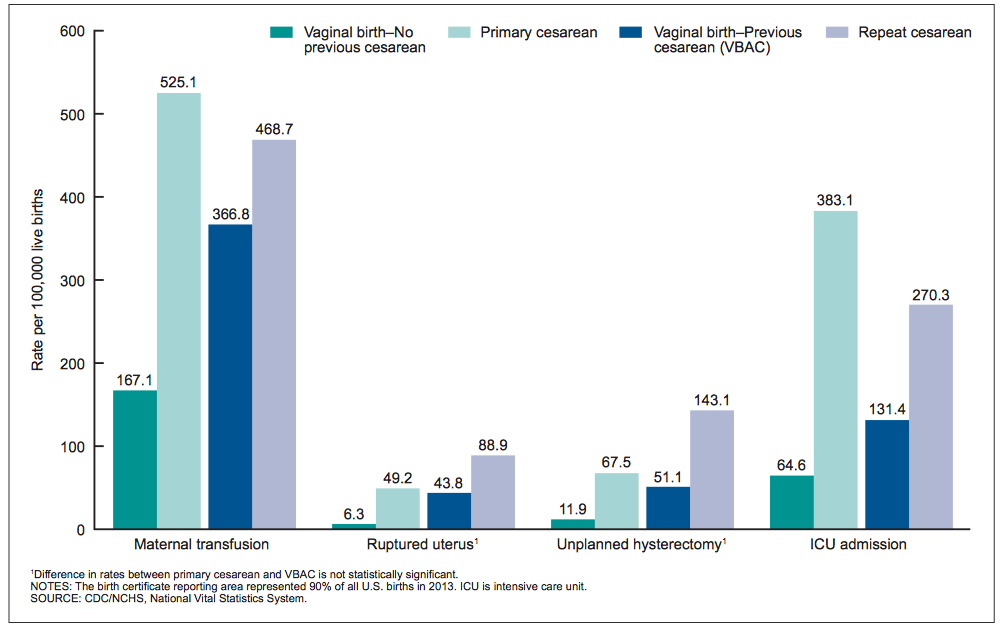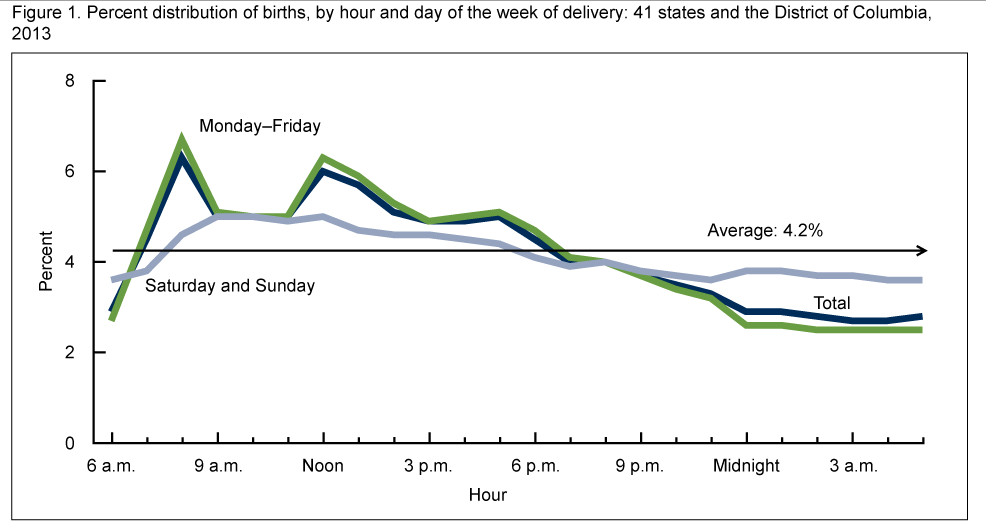Underneath the surface, there are many fractured cracks in the Earth’s crust, called faults. Naturally, these cracks would cause instability but with the overlying rocks above and rocks side by side acting as opposing forces, frictional resistance is formed, preventing fault movement. If this friction is ever counteracted the fault will slip, leading to seismic movement and threatening populations on Earth.
Hydraulic fracturing (fracking) negates this necessary friction when a high pressurized liquid is injected into the surface causing rocks to fracture in order to extract petroleum and natural gas. Following fracking, all the waste fluid must be safely eliminated so the chemicals do not infiltrate the surface drinking water. To be cost-efficient oil companies created concrete covered disposal wells a few meters below the surface to drill the wastewater into for permanent storage. The drilling of this wastewater counteracts this natural friction and causes separation between fault lines, leading to further seismic movement. As long as fracking and the fracking waste disposal system continue the faults will grow more unsteady, so a new method for oil extraction is crucial. In the United States the majority of seismic movements are triggered by waste fluid drilling disposal, however, in Canada less water is used in the extraction of oil so more earthquakes are driven by fracking.
New research shows an undeniable correlation between fracking water disposal drilling and earthquakes recorded in Western Canada’s oil region, Alberta and British Columbia since 1985. The results showed that 90% of earthquakes over the magnitude of 3.0 on the Richter Scale (which measures the severity of earthquakes) were linked to nearby fracking operations, while only 5-10% of earthquakes were generated from natural causes. Although only 0.3% of fracking operations included in the study were associated with severe earthquakes, a large abundance of magnitude 1.0 – 2.0 earthquakes have occurred. These may seem harmless, but for every small earthquake there is a higher rate of seismic activity and a greater probability that a massive, extreme earthquake will be triggered.
Seismologists have been attempting to keep deep injection sites far away from fault lines. However, as the oil industry grows there will be a continuous struggle to find area that will not affect plate tectonics. Further studies and computer simulation are able to give us insight into how injections affect fluid pressure and how this increase in pressure leads to destabilizing the fault line. Nevertheless, the best solution is a new method of oil extraction, because soon fracking and wastewater disposal drilling will lead to much bigger earthquakes and man-driven environmental disasters.
-Jenna Carpenter-Boesch


